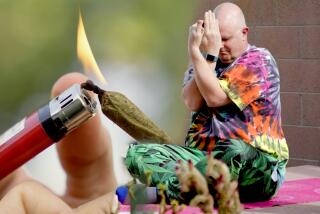Yoga’s History Long, Paths Diverse
- Share via
Yoga developed as part of the Hindu religious tradition about 2,000 years ago. Like many other things Eastern, it came to widespread public awareness in the West during the 1960s, in a form adapted to Western lifestyles and thinking.
“Light on Yoga,” a book by the Indian yoga teacher B.K.S. Iyengar, played a key role in popularizing yoga in North America.
In the West, the term yoga has come to be synonymous with the branch of Hindu yoga emphasizing twists, stretches and balances, as well as breathing and some meditation.
Hatha yoga is designed to provide physical flexibility, relaxation and mental clarity.
There are several different forms of hatha yoga popular in the United States.
* Iyengar, which is the best-known, stresses precise alignments of muscle and bone to build stability and stamina. It often employs props such as wooden blocks, straps and chairs to increase flexibility. The world conference of Iyengar students and teachers was held in San Diego last year.
* Viniyoga, preached by another Indian guru, T.K.V. Desikachar, uses repetitive twists and stretches--a series of forward standing bends, for example.
* Ashtanga, brought to the West by Pattabhi Jois, uses linked poses and is highly aerobic. (Tim Miller of Encinitas is among the best-known American ashtanga teachers.) Pattabhi Jois’ son teaches a more Indian form of ashtanga in private classes in Solana Beach.
Though these yoga styles are somewhat different in their more extreme forms, they have many common elements, and some teachers draw from all three forms. Iyengar, Desikachar and Jois all had the same yoga teacher, Shri Krischnamacharya, an Indian yogi and scholar who recently died at age 100.
Kirschnamacharya was known for his powerful control over the functions of his own body, in addition to his innovative teachings.
